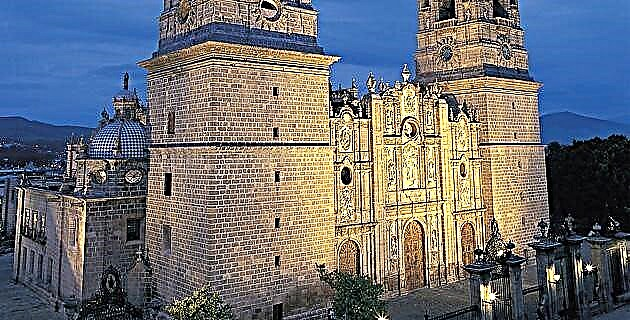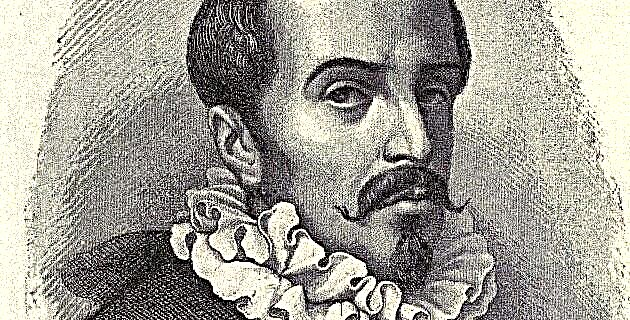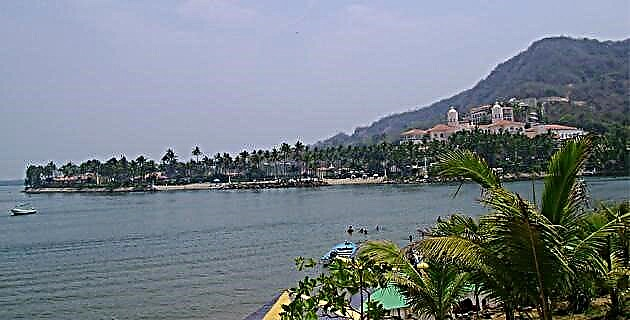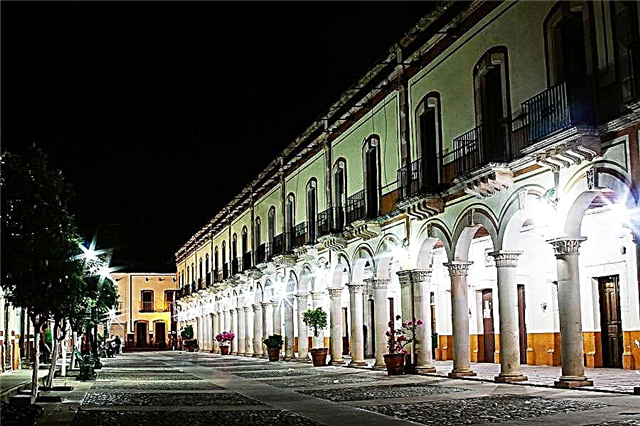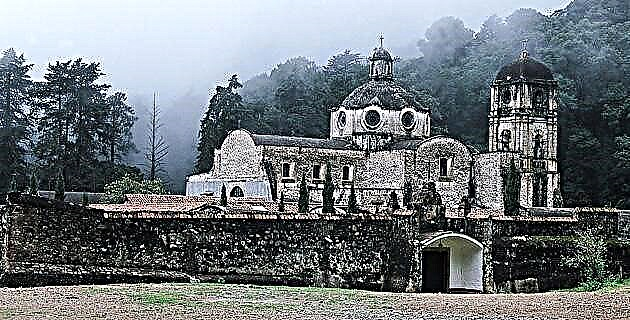The first was a flimsy adobe and wood construction. Until 1660 this architectural enterprise was started, which, as Manuel González Galván affirms: "is the most notable and monumental example of tabletop baroque.
Cathedral iconography is not accidental; it keeps the didactic religious and symbolic sense that distinguishes the baroque.
On the outside the reliefs on its facades stand out. It has two domes and its two equal towers stand out, except for the crosses that top them; one of iron and the other of stone that recall the two natures of Christ: the divine iron and the human stone.
We can admire some testimonies of splendor such as the silver manifestator that measures 3.19 m in height, adorned with 29 statuettes and 42 gilded reliefs that communicate a message about the Eucharistic presence of Christ.
Another piece of fine silver is the baptismal font with a strong neoclassical nuance. Among the interior sculptures a Christ stands out from the 16th century.
A Guadalupana Epiphany draws attention from the large art gallery, which reveals an emerging nationalism at the end of the Colony. The monumental organ, “San Gregorio Magno”, was installed in 1905 and is the instrument used for the “International Organ Festivals”, which take place every year in the month of May.
Government Palace Facing the cathedral is the magnificent Government Palace, which was previously the seminary of San Pedro; prominent figures passed through its classrooms, some of national resonance such as José María Morelos and Melchor Ocampo.
On this site, in April 1824 the first Constituent Congress was installed and in August, the first Supreme Court of Justice was established. At the time of the Reformation the Seminary was extinguished and its splendid hostel was converted into the Government Palace. At the beginning of the sixties of this century, Alfredo Zalce painted some murals on the upper floor that represent historical scenes, landscapes and ethnographic themes from Michoacán.
Old Hospital of San Juan de Dios In front of the house of José María García Obeso, where libertarian conspiratorial meetings were held in 1809, is the building that at the beginning of the 18th century housed the Royal Hospital of San José.
The hospital that later took the name of San Juan de Dios, remained until the time of the Reformation and in 1830, Dr. Juan Manuel González Urueña installed the first chairs of medicine that in 1858 became the School of Medicine of Michoacán, which achieved prestige national.
Palace of Justice and Alhóndiga The Palace of Justice in colonial times was the seat of the Town Hall. At the beginning of republican life it was the Government Palace and the Municipal Palace. It also housed the Colegio de San Nicolás. Its facade preserves baroque elements; the eighteenth-century courtyard combines freedoms and technical bravado typical of the Baroque and the old headquarters of the Alhóndiga, with a Churrigueresque façade, has been incorporated into the judicial complex.
Regional Michoacano Museum The Michoacano Museum, founded in 1886 is one of the oldest in the Mexican province and one of the most prestigious in its centennial life.
Created in the Colegio de San Nicolás, it returned to its original place in 1915. It is a palatial house that belonged in the 18th century to Isidro Huarte, a wealthy merchant and politician, Agustín de Iturbide's father-in-law. Before, it was owned by Mrs. Francisca Román, the Empress Carlota's maid of honor in 1864; When Maximilian of Habsburg visited Morelia, he stayed in this mansion.
The museum contains a section on Michoacan ecology and five that expose the pre-Hispanic era, the Cardenista period, the colonial period, the independence, the reform and the Porfiriato. The exhibition contains colonial codices and the famous painting known as El Traslado de las Monjas (1738) is its greatest treasure as an artistic work, as it is the only historical, sociological and ethnographic testimony, as expressed by the painter Diego Rivera.
Municipal Palace This stately home was originally the tobacco factory that was established in Valladolid in 1766.
After Independence, offices of the executive and judicial branches functioned on the upper floor and the tobacco administration and a cigar factory continued on the ground floor.
In 1861 the state government ceded the building to the City Council and the council continued to share spaces with other agencies.
Temple of Merced The Mercedarians Pedro de Burgos and Alonso García, in 1604 raised the temple and shortly after a church and convent with an extensive garden were built.
The church was finished in 1736 and during the last century, based on the confiscation laws, the convent was expropriated

